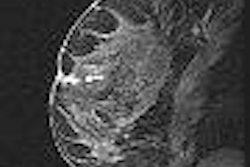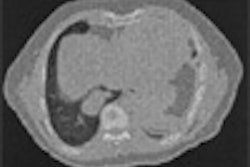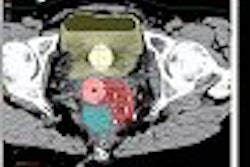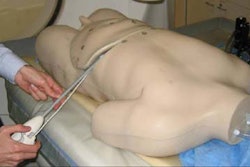Women who underwent uterine artery embolization (UAE) reported a significant improvement in symptoms as well as their overall quality of life, according to results from the Fibroid Registry for Outcomes Data (FIBROID). In addition, these improvements held fast a year after the procedure.
A multicenter, prospective registry, FIBROID was started in 1999 and began enrolling patient volunteers a year later. More than 3,000 women entered before enrollment closed in 2002.
"The study is ongoing and the patient cohort will be followed up for a total of three years," wrote Dr. James Spies and colleagues in Obstetrics & Gynecology. "We present here the outcomes reported at six and 12 months after treatment.... The registry was designed to assess the outcome from embolization in a wider range of geographic and practice settings. This study is unusual in that it provides a window into the outcome from a procedure as it (is) adopted into clinical care" (December 2005, Vol. 106:6, pp. 1309-1318).
Spies, who is from Georgetown University Hospital in Washington, DC, is the lead investigator of FIBROID. Co-researchers are from various institutions in Durham and Chapel Hill, NC; Philadelphia; and Los Angeles.
At the six-month and one-year follow-up mark, 2,112 patients were sent a quality-of-life questionnaire. Information was culled on the presence of menstrual periods, current treatment for leiomyoma-related symptoms, and patient satisfaction. Patient scores were expressed on a 0 to 100 scale, with the higher number indicating a better score.
Follow-up data were obtained on 1,797 patients at six months and 1,701 at 12 months. The majority of those who completed follow-up were white (47.42%), had a lower body mass index (27.65), and fewer medical co-morbidities.
At one year, the mean symptom score had improved from 58.61 to 19.23 (p < 0.001). Less than 6% of the patients had no improvement in symptoms. Smaller leiomyoma size, submucosal location, and heavy menstrual bleeding were some of the factors that influenced symptom scoring, the authors wrote.
The mean health-related quality-of-life score climbed from 46.95 at baseline to 86.68 after one year. The majority of patients (83%) were satisfied with their one-year outcome, and said they would recommend UAE to others.
Overall, 3.6% of the patients required one or more gynecologic interventions at six months and 5.9% needed intervention at 12 months. Hysterectomy was performed in less than 3% of the women. Amenorrhea occurred in 7.3% of the patients, the majority of whom were over the age of 45.
The authors stated that they did find a difference between women who underwent unilateral versus bilateral embolization. Those who had a unilateral procedure (most likely due to technical failure) were more likely to have an adverse event and report less improvement in symptom score. However, operator experience did not generally have a major effect on outcomes, they explained.
Some of the limitations of this study included the lack of data on 20% of the subjects at the one-year mark and the inherent limitations of self-reporting, Spies' group acknowledged. Nevertheless, they concluded that UAE is effective for relieving symptoms associated with uterine leiomyomata, one year after treatment. In addition, the study demonstrates that questionnaires can be useful for assessing quality of life.
Future work will continue to track patients at 24 and 36 months, the authors stated. Other possible areas of research would include focused studies on post-treatment complications using menstrual records and additional imaging studies.
"The registry does provide estimates of the frequencies of these conditions, which will help in prioritizing and planning more detailed studies," the authors wrote.
By Shalmali Pal
AuntMinnie.com staff writer
January 4, 2006
Related Reading
Fibroid treatment shortens hospital stay, but raises readmission risk, November 25, 2005
Existing research lacking dollars-and-cents assessment of uterine fibroids, November 23, 2005
Uterine artery embolization effective long-term for leiomyomata, November 8, 2005
Diffusion-weighted MR noninvasively monitors uterine fibroid therapies, September 9, 2005
Latest UFE studies show importance of both fibroid and particle size, April 5, 2005
Copyright © 2006 AuntMinnie.com



















